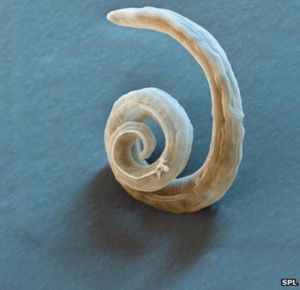Last week, I worked 59 hours.
For many vets, this is normal.
And no emotional picnic: we do things like administering lethal injection to people’s pets because we can’t find a way to give them a nice quality of life.
Little wonder we score so highly in the professional leagues of suicide, injury and divorce.
It also astonishes me that lots of veterinary parents reckon that 15-hour night-shifts are the best chance of a family-friendly career. Shouldn’t there be better ways?
I am day-vetting. But Tiddler’s nursery closes half an hour before most of us have seen our last consultation. With Big-Sprog’s school closing mid-afternoon, I am trying to find a sensible way to keep a locum job I’ve grown fond of when hubby leaves again. It’s not easy – which is why I’m a locum.
But let’s not rant about the social concerns of the profession. I enjoy my work and – in absence of having much home-life this week – I thought I’d share some veterinary stuff.
After work I drove to Leeds. I followed my sat-nav to a big hotel, walked into a spaceous lobby where I was greeted and directed to the buffet. I ate a beautiful curry and a chocolate cake, found a free elaborate coffee machine that made elaborate coffee free and picked up a complementary copy of the Independent. I read it overlooking the impressive entrance room, occasionally staring down at some impressive bits of art.
Yes, I realise that for some of you this is routine. But my working day had involved squeezing anal-glands and examining a rabbit’s poo-covered genetalia. Today’s vet surgery is still being built, so I was working in a mobile unit. It’s pretty servicable: it even has a porter-loo (which is amusingly behind a combination-lock door and has a separate padlock and key, making it the highest-security porter-loo on which I have ever parked my bum).
Walking into the hotel toilet was heaven. After that, it was time for the conference.
Mostly about this little guy.

http://www.bbc.co.uk: Angiostrongylus Vasorum
He isn’t very big. His larvae live on the inside of slugs and snails (or frogs who have eaten a slug or snail). They stay there, maturing into big larvae, until the slug / snail / frog is eaten by a dog.
Of course, they end up in the dogs’ tummy and intestines. They wriggle through the intestine walls, through the liver and into the dogs’ heart. It’s a rite of passage for the mini Angiostrogyluses; by the time they get there, they are of age.
They lay their eggs which move through the bloodstream to the tiny blood vessels of the lungs. The eggs hatch out into the airways. The dog coughs them up and swallows them; this time they go straight through the intestines and are pooed out into the park, where a passing slug or snail comes along and gobbles them up.
Angiostrongylus doesn’t mean any harm. The slug is its home and the dog is a convenient warm place to breed. But as far as the dog is concerned, larvae hatching into your lungs will make you cough. More concerning, the presence of the parasite in the bloodstream can trigger the blood’s clotting system to work overtime: hundreds of tiny microclots might start flying around the blood vessels, triggering more tiny clots until the body’s natural clotting chemicals are all used up. If its blood no longer clots, the dog bleeds. .
A switched-on vet will give worm-poisen and a blood transfusion with clotting factors. The people who make worm-poisen have spent the last ten years telling anyone who’ll listen about this. Preventative lungworm treatment is sold to owners of healthy animals, on the basis that reported lungworm cases have been rising steadily so lungworm must be sweeping up North from France.
I was always sceptical of this one. Are we sure that Lungworm wasn’t always here in low numbers, and that we are only diagnosing it more because the drugs companies have educated us so well?
Yet there is new evidence. Lungworm also affects foxes. In 2008, a team from Bristol University scraped up roadkill foxes and dissected them for lungworm. The worm was found in 7.3% of foxes. In 2015 they repeated project using the same techniques. Now they report the numbers at 18.3%. So maybe lungworm is becomming more common in our environment after all.
There’s now a way to detect lungworm larvae in slugs. If slugs are tested from different parks around the UK, perhaps we will learn where dogs are most likely to pick Angiostrongylus Juniors up. If practices know whether or not their local slugs are heavily infected, maybe they can give out better worming advice.
At the hotel in Leeds, the meeting disbanded. It was now 10pm and most delegates had been working all day. Did they leave the room quickly making a bee-line for the car-park?
No. We queued up for a ‘slug-collecting kit’, complete with tuppaware box with air-holes and a set of instructions as to how to best harvest slugs (go out with a head-torch at night. Don’t let them dry out. Slugs are quite happy, apparently, clinging to the sides of the box in the post. Perhaps there is someone whose job it is to open the slug deliveries at the other end and put them somewhere nice to crawl about before they are tested).
I listened to gleeful chatter all around me, making plans for slug-hunts on top of long and stressful working weeks.
I realised something.
We vets must love what we do.
It’s a bugger, because it means we care too much about our cases, work too hard, and have some of the highest suicide, injury and divorce rates going.
And yet, it’s actually rather wonderful, isn’t it?


